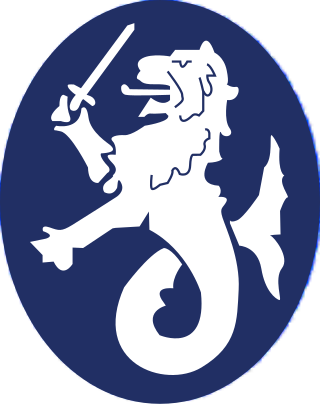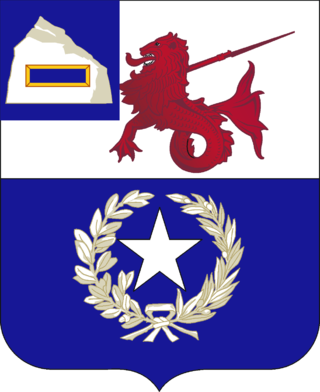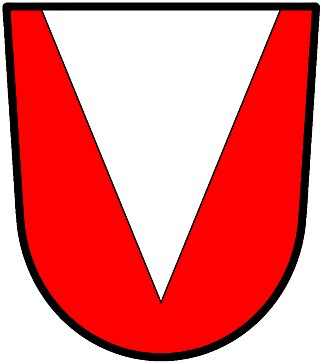
The Philippine Department was a regular United States Army organization whose mission was to defend the Philippine Islands and train the Philippine Army. On 9 April 1942, during World War II, the organization surrendered to the Japanese. The department and its sub-units were predominantly under the command of American officers, including an American general, while the majority of the troops were enlisted Filipinos, known as the Philippine Scouts (PS). The primary force of this department was the Philippine Division. Of the 22,532 troops, 10,473 were members of the Philippine Division itself.

The 24th Field Artillery Regiment (Philippine Scouts) (24th FA (PS)) was a Philippine Scouts unit, part of the US Army's Philippine Division, formed in 1922 and active until April 1942. Antecedent units dated back to 1899.

Duke of Fife is a title in the Peerage of the United Kingdom that has been created twice, in both cases for Alexander Duff, 1st Earl of Fife. In 1889, Lord Fife married Princess Louise, the eldest daughter of Albert Edward, Prince of Wales and a granddaughter of Queen Victoria.

In heraldry, an ordinary is one of the two main types of charges, beside the mobile charges. An ordinary is a simple geometrical figure, bounded by straight lines and running from side to side or top to bottom of the shield. There are also some geometric charges known as subordinaries, which have been given lesser status by some heraldic writers, though most have been in use as long as the traditional ordinaries. Diminutives of ordinaries and some subordinaries are charges of the same shape, though thinner. Most of the ordinaries are theoretically said to occupy one-third of the shield; but this is rarely observed in practice, except when the ordinary is the only charge.

The 57th Infantry Regiment was a unit in the Philippine Scouts. During their combat in Bataan members received 1 Medal of Honor, 21 Distinguished Service Crosses and 68 Silver Stars.
The 46th Infantry Regiment is a unit in the United States Army that served in World War II and Vietnam. The 1st Battalion, 46th Infantry Regiment currently conducts Infantry One Station Unit Training under the 197th Infantry Brigade.

The 50th Infantry Regiment is a United States Army infantry regiment.

The 33rd Infantry Regiment was an American unit stationed in the Panama Canal Zone and Caribbean from 1916-56. Though providing troops for various other American military formations, the regiment had no battle honors of its own.

The 61st Infantry Regiment is an infantry regiment of the United States Army traditionally associated with the 5th Infantry Division.

In heraldry, a pile is a charge usually counted as one of the ordinaries. It consists of a wedge emerging from the upper edge of the shield and converging to a point near the base. If it touches the base, it is blazoned throughout.

The 48th Infantry Regiment is an infantry regiment in the United States Army first formed in 1917.

The 163rd Infantry Regiment is a regiment of the Montana National Guard. It went overseas with the 41st Infantry Division in World War II.

The 28th Field Artillery Regiment is a field artillery regiment of the United States Army, first constituted in 1918 in the National Army (USA).

The 146th Field Artillery Regiment is a field artillery regiment of the Army National Guard first Constituted in 1886 as the 1st, and 2nd Regiments of Infantry.
The 62nd Infantry Regiment was a regular infantry regiment in the United States Army.
The 59th Coast Artillery Regiment, later the 59th Air Defense Artillery Regiment, was a regiment in the United States Army. It served as a heavy artillery regiment in France in World War I, and was in the Battle of Corregidor, Philippine Islands, in World War II.
The 10th Coast Artillery Regiment was a Coast Artillery regiment in the United States Army. It primarily served as the Regular Army coast artillery component of the Harbor Defenses (HD) of Narragansett Bay, Rhode Island from 1924 through 1944, when it was relieved and disbanded as part of an Army-wide reorganization.
The 62nd Air Defense Artillery Regiment is an Air Defense Artillery regiment in the United States Army. The lineages of some of the units that have been part of the 62nd Air Defense Artillery and its predecessors give the regiment campaign credit for the War of 1812.
The 202nd Air Defense Artillery was an antiaircraft regiment of the Illinois Army National Guard.
The 243rd Coast Artillery Regiment was a Coast Artillery Corps regiment in the Rhode Island National Guard. It garrisoned the Harbor Defenses of Narragansett Bay, Rhode Island 1924–1944.














